Molecular simulation has become a cornerstone both in materials and biomolecular research, and it is one example where SeRC has enabled a new type of three-way collaborations between application areas, infrastructure, and method development. The GROMACS code developed at Stockholm University and KTH has grown into one of the world’s most widely used molecular-dynamics implementations, with thousands of active users both in academia and industry.
Together with several partners such as NVIDIA, Intel, AMD, Stream-Computing, and IBM, SeRC and the GROMACS team have developed new generations of heterogeneous acceleration and parallelisation algorithms that achieve world-leading simulation performance on all sorts of hardware from embedded graphics processors to supercomputers.
This computational work has been instrumental for several high-impact application works where SeRC researchers have shown phenomena such as how ion channels open, and how membrane proteins bind speci c lipids, structures of new transporters, collaborations with the electronic structure community on multiscale QM/MM simulations, and not least explanations of how the outermost layer of our skin forms on the molecular level.
SeRC has also been a very strong driving force to form close and long-term collaborations with the infrastructure efforts at PDC and the Computational Fluid Dynamics team, which has led to new joint programmes on exascale simulation software as well as the BioExcel EU Centre of Excellence for Computational Biomolecular Research in Stockholm.




